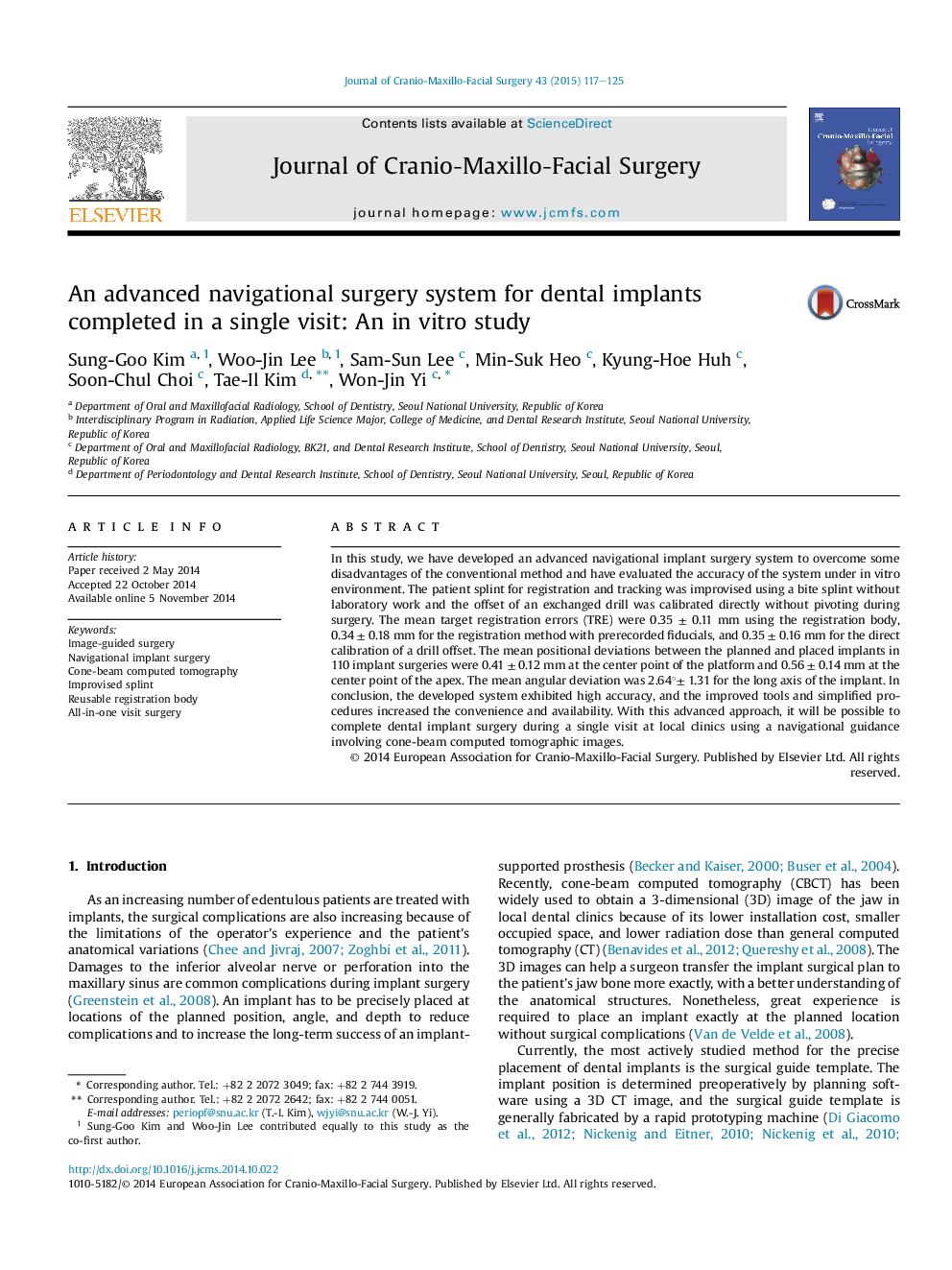| Article ID | Journal | Published Year | Pages | File Type |
|---|---|---|---|---|
| 3142854 | Journal of Cranio-Maxillofacial Surgery | 2015 | 9 Pages |
In this study, we have developed an advanced navigational implant surgery system to overcome some disadvantages of the conventional method and have evaluated the accuracy of the system under in vitro environment. The patient splint for registration and tracking was improvised using a bite splint without laboratory work and the offset of an exchanged drill was calibrated directly without pivoting during surgery. The mean target registration errors (TRE) were 0.35 ± 0.11 mm using the registration body, 0.34 ± 0.18 mm for the registration method with prerecorded fiducials, and 0.35 ± 0.16 mm for the direct calibration of a drill offset. The mean positional deviations between the planned and placed implants in 110 implant surgeries were 0.41 ± 0.12 mm at the center point of the platform and 0.56 ± 0.14 mm at the center point of the apex. The mean angular deviation was 2.64°± 1.31 for the long axis of the implant. In conclusion, the developed system exhibited high accuracy, and the improved tools and simplified procedures increased the convenience and availability. With this advanced approach, it will be possible to complete dental implant surgery during a single visit at local clinics using a navigational guidance involving cone-beam computed tomographic images.
